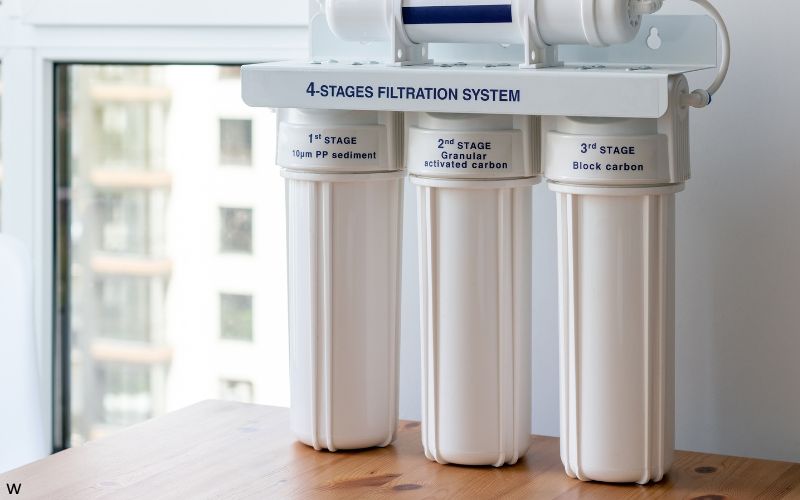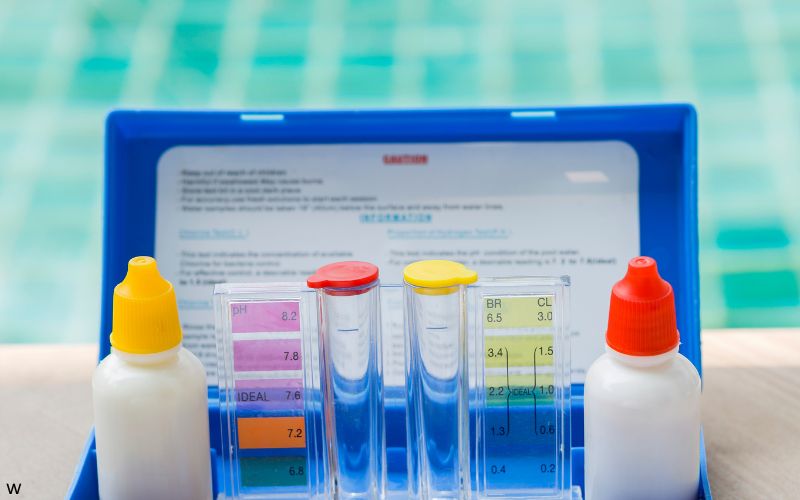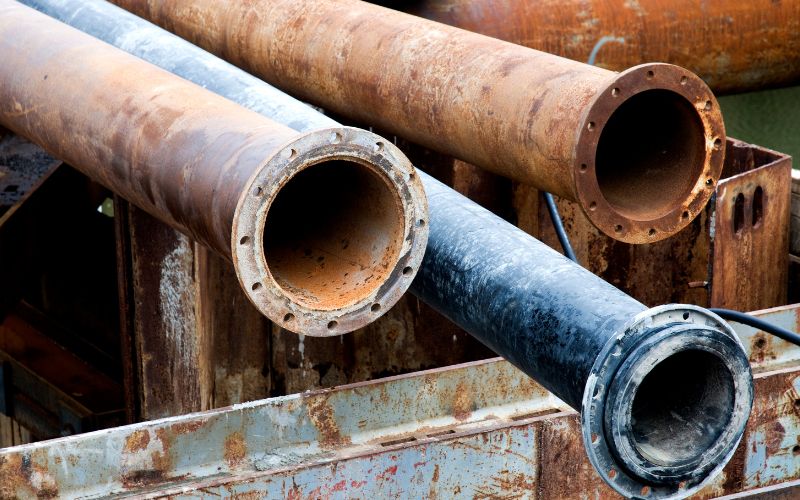Philadelphia Water Quality at a Glance
but some concerns remain
Is Philadelphia Water Safe to Drink?
Generally Safe with Room for Improvement – Philadelphia water meets all state and federal standards and consistently exceeds EPA requirements. However, PFAS “forever chemicals” are present with PFOA at 7.3 ppt and PFOS at 5.5 ppt. Lead remains a concern due to an estimated 20,000+ homes with lead service lines, though PWD’s corrosion control keeps 90% of homes below 15 ppb. The city is investing $1 billion+ through the Water Revitalization Plan to upgrade infrastructure and address emerging contaminants.
⚠️ Key Concerns for Philadelphia Residents
- PFAS “Forever Chemicals”: PFOA at 7.3 ppt and PFOS at 5.5 ppt detected; new EPA limits of 4 ppt will require treatment upgrades by 2029
- Lead Service Lines: An estimated 20,000+ homes have lead pipes; PWD offers free testing and zero-interest loans for replacement
- Disinfection Byproducts: TTHMs at 51 ppb and HAA5 at 43 ppb; some locations exceeded health advisory levels for TCAA in 2024
- Infrastructure Age: Many treatment facilities date to the 1950s-60s; massive Water Revitalization Plan underway for upgrades
Read the full report below for detailed analysis, city-specific data, and actionable recommendations for Philadelphia residents.
Philadelphia – Pennsylvania – Water Quality Report 2025: PFAS Testing, Infrastructure Concerns & Safety across your city
Philadelphia, the nation’s sixth-largest city, serves approximately 1.6 million residents with water through the Philadelphia Water Department (PWD). With a water distribution system dating back to 1801, the city’s infrastructure includes over 3,100 miles of water mains, three water treatment plants, and numerous pumping stations, delivering roughly 300 million gallons daily.
The Delaware and Schuylkill rivers provide Philadelphia’s water supply, both protected by extensive watershed management programs. PWD operates one of the oldest water systems in the United States, but continues to modernize its facilities through the ambitious Water Revitalization Plan. The city has made significant investments in green stormwater infrastructure and improving overall water quality through comprehensive watershed protection and advanced treatment technologies.

Philadelphia Water Quality: Current Status (2024-2025)
Latest Testing Results
- Lead Levels: The most recent testing period (2022) showed 90th percentile lead levels of 2.0 parts per billion (ppb), well below the EPA action level of 15 ppb and significantly better than many water systems nationwide.
- Testing Scope: Philadelphia conducts approximately 500,000 water quality tests annually, including lead and copper monitoring at over 100 high-risk residential sites selected based on the likelihood of lead presence in plumbing systems.
- Compliance Status: Philadelphia’s water meets all federal and state drinking water standards for regulated contaminants. The system has maintained compliance with all major drinking water regulations including the Lead and Copper Rule.
Source Water Protection
- Watershed Management: PWD actively manages the Delaware River Watershed, which extends 330 miles from New York State to the Delaware Bay, implementing comprehensive conservation practices and monitoring programs to protect source water quality.
- River Water Quality: Both the Delaware and Schuylkill rivers have shown significant improvements in water quality over recent decades due to federal Clean Water Act regulations and extensive local watershed protection efforts.
- Drinking Water Intakes: Philadelphia’s three water treatment plants (Baxter, Queen Lane, and Belmont) draw water from carefully selected intake points along the rivers to maximize source water quality and optimize treatment processes.
Advanced Treatment Technology
- PFAS Treatment Preparation: PWD is currently testing advanced treatment technologies including granular activated carbon and other methods to address PFAS compounds, with full-scale implementation planned to meet upcoming EPA regulations by 2029.
- Disinfection Systems: All three treatment plants utilize advanced filtration and chloramination (chlorine + ammonia) systems to ensure microbiological safety while minimizing disinfection byproducts like trihalomethanes.
- Corrosion Control: Philadelphia implements optimal corrosion control treatment using zinc orthophosphate to minimize lead and copper leaching from plumbing systems, a process that has been successfully used for over 25 years.
Infrastructure Modernization
- Water Revitalization Plan: PWD has launched an ambitious multi-billion dollar infrastructure modernization program with approximately 400 projects focused on upgrading treatment plants, replacing aging water mains, and improving system reliability.
- Green Stormwater Infrastructure: Philadelphia is implementing one of the nation’s most comprehensive green infrastructure programs with over 1,000 projects including rain gardens, permeable pavement, and green roofs to reduce stormwater pollution.
- Lead Service Line Program: PWD has created a comprehensive service line inventory map available online and offers free lead service line replacements during planned water main construction, with additional assistance programs for qualifying residents.
Drinking Water Innovations
Philadelphia continues to lead in water innovation through its Green Cities, Clean Waters initiative, which represents one of the most comprehensive urban watershed management programs in the United States. The city operates state-of-the-art laboratory facilities that perform advanced water quality monitoring and research on emerging contaminants. PWD’s proactive approach includes extensive community engagement, transparent reporting of water quality data, and collaboration with regional partners to protect source water quality throughout the watershed.
Recommendations for Philadelphia Residents

Use Filtered Water
If your home was built before 1986 or has lead service lines, use NSF-certified water filters (Standard 53) for drinking and cooking water. Consider filters certified for both lead removal and PFAS reduction for maximum protection.

Get Free Water Testing
Philadelphia offers free lead testing for all residents. Call PWD at (215) 685-6300 to schedule testing of your tap water, or visit water.phila.gov for online scheduling and additional water quality resources.

Check Service Lines
Use Philadelphia’s online service line lookup tool at water.phila.gov/service-line-map to check if your property has a lead service line. PWD offers zero-interest loans and free replacements during water main construction projects.
Quality News About Your Water
Get the comprehensive water quality news coverage you need with our dedicated US Water News Service. From coast to coast, we deliver in-depth reporting and expert analysis on PFAS contamination, EPA regulatory changes, infrastructure developments, and emerging water safety issues affecting communities nationwide. While mainstream media only covers the biggest stories, we provide the detailed, ongoing coverage that helps you understand the full scope of America’s water challenges. Whether you’re a concerned citizen, water professional, or community leader, our daily updates and analytical insights keep you informed about the issues that matter most to public health and environmental safety.
Frequently Asked Questions
Is Philadelphia’s tap water safe to drink?
Yes, Philadelphia’s tap water meets all federal and state drinking water standards and undergoes extensive testing with over 500,000 tests conducted annually. The city treats water from the Delaware and Schuylkill rivers using advanced filtration and disinfection processes.
While the water leaving treatment plants is safe, homes built before 1986 may have lead in their plumbing. Philadelphia Water Department recommends using NSF-certified filters if you live in older homes or apartments, especially if children or pregnant women are present. Free water testing is available for all residents by calling (215) 685-6300.
How do I know if I have a lead service line?
Approximately 1 in 20 Philadelphia households are estimated to have lead service lines, primarily in homes built before 1950. To check your property:
1. Use Philadelphia’s online service line lookup tool at water.phila.gov/service-line-map
2. Look for the water service line where it enters your home (usually in the basement). Lead pipes are dull gray, soft enough to scratch with a key, and won’t attract a magnet.
3. Call (215) 685-6300 to request a professional evaluation or free water testing.
PWD offers zero-interest loans for service line replacement and provides free replacements during planned water main construction projects.
What is Philadelphia doing about PFAS in drinking water?
Philadelphia proactively monitors for PFAS (per- and polyfluoroalkyl substances) and currently detects PFOA at 7.3 ppt and PFOS at 5.5 ppt, which are above the new EPA limits of 4 ppt. PWD is:
• Conducting pilot studies with granular activated carbon, ion exchange, and reverse osmosis technologies
• Planning major upgrades at all three treatment plants to meet EPA regulations that become enforceable in 2029
• Monitoring source water in the Delaware and Schuylkill river watersheds
• Publishing all PFAS test results at water.phila.gov/pfas
Philadelphia is committed to meeting all upcoming PFAS regulations and is investing in advanced treatment technology to ensure compliance.
Why does Philadelphia water sometimes taste or smell different?
Occasional changes in taste or odor can occur for several reasons:
• Seasonal variation: Warmer temperatures may increase chlorine odors as disinfection levels are adjusted to maintain safety
• Source switching: Different areas of Philadelphia receive water from different treatment plants (Baxter, Queen Lane, or Belmont), and slight mineral content differences may be noticeable
• Natural compounds: Seasonal algae growth in source water can create earthy or musty tastes, which are harmless but detectable
These changes don’t affect water safety. For persistent issues, call PWD at (215) 685-6300. Refrigerating water in an open container can improve taste by allowing chlorine to dissipate.
Contaminants of Concern

PFAS Compounds
Source: Industrial discharges, firefighting foam, consumer products, and upstream contamination in the Delaware and Schuylkill river watersheds
Health Effects: Potential increased risks of cancer, decreased vaccine response, increased cholesterol, liver damage, and developmental effects
Current Status: PFOA detected at 7.3 ppt, PFOS at 5.5 ppt; PWD planning advanced treatment upgrades to meet EPA limits by 2029

Lead
Source: Lead service lines (especially pre-1950 construction), lead solder in older plumbing, and brass fixtures containing lead
Health Effects: Developmental delays in children, reduced IQ, learning difficulties, kidney damage, cardiovascular effects in adults
Current Levels: 90th percentile value of 2.0 ppb (2022 testing) EPA Action Level: 15 ppb, but no level of lead is considered safe for children
Please read – our information
The information presented on cleanairandwater.net is compiled from official water quality reports, trusted news sources, government websites, and public health resources. While we strive for accuracy and thoroughness in our presentations, we are not scientists, engineers, or qualified water quality professionals.
Our mission is to present water quality information in an accessible, real-world format that helps people understand what’s in their water and make informed decisions about their health and safety. We believe that complex environmental information should be available to everyone in a format that’s easy to understand.
We make every effort to ensure our content is current and accurate, but we cannot guarantee that all information is complete or error-free. This website should not replace official communications from your local water utility or health department. We always recommend consulting official sources for the most up-to-date information regarding your specific water system.
Clean Air and Water is not liable for any unintentional errors, omissions, or outdated information. The content on this site is provided for informational purposes only and should not be considered professional advice.


